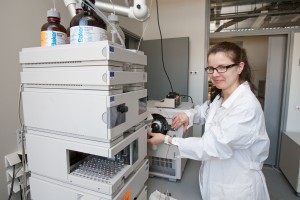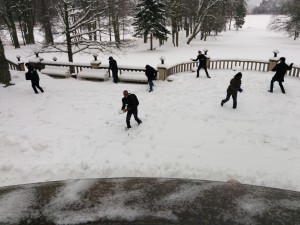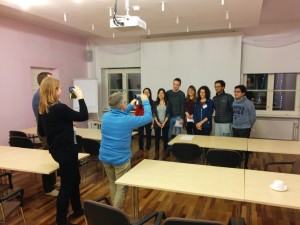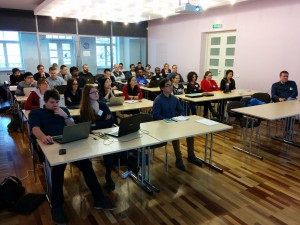 Today (June 06, 2016) 11 AMS master students successfully defended their master’s theses. Congratulations to all of you!
Today (June 06, 2016) 11 AMS master students successfully defended their master’s theses. Congratulations to all of you!
Photo on the left, from left to right: Xiaozhou Ye, Martinš Jansons, Oluwamayowa Sharon Sanni, Sylvestre Tc Pagkeu, Sofia Raquel Alves Oliveira, Stanislav Andres, Theofanis Panagiotopoulos, Max Hecht, Sagar Ramanbhai Patel, Rūta Veigure, Francis Gyakwaa.
As is usual for AMS the topics of the theses were diverse ranging from artificial photosynthesis to measurements in biochemistry and from determination of dangerous radionuclides to calibration of hygrometers. The full list of the defenders and their thesis titles is below. This list demonstrates well the ubiquitous nature of measurement science. The scientific/technological quality of the theses was high: a number of research papers are planned to be published on the basis of the theses and the results of one of them will be patented. (Photo on the right: Rūta Veigure discussing with the opponent)
(Photo on the right: Rūta Veigure discussing with the opponent)
Full list of students and thesis topics:
- Sylvestre Tc Pagkeu, Joint application of an ARC-probe and antibody in homogeneous TR-FRET assay for determination of the concentration of protein kinase Pim2
- Max Hecht, Investigations of chlorophyll interactions in Water Soluble Chlorophyll Binding Protein
- Sofia Raquel Alves Oliveira, Role of the stringent response in antibiotic tolerance of Escherichia coli
- Rūta Veigure, Development and validation of UHPLC-MS/MS method for analysis of sedative drugs and their metabolites in blood plasma
- Oluwamayowa Sharon Sanni, Development and validation of gamma spectrometric analysis procedure using a high purity Germanium detector
- Sagar Ramanbhai Patel, Development of foreign body detection methodology in industrial food preparation process
- Theofanis Panagiotopoulos, Calibration of hygrometers at fluctuating and transient conditions
- Francis Gyakwaa, Validation of alpha spectrometric analytical measurement procedure for the determination of Polonium-210 (210Po) in environmental samples
- Xiaozhou Ye, Relationships between Environmental Factors and the Growth of Above-Ground Biomass in Boreal Forest
- Martinš Jansons, Characterization of natural sedimentary dolomite and limestone reference materials from Geological Survey of Estonia using LA-ICP-MS
- Stanislav Andres, Development of method for preliminary identification of cyclic dinucleotides in bacterial cultures











